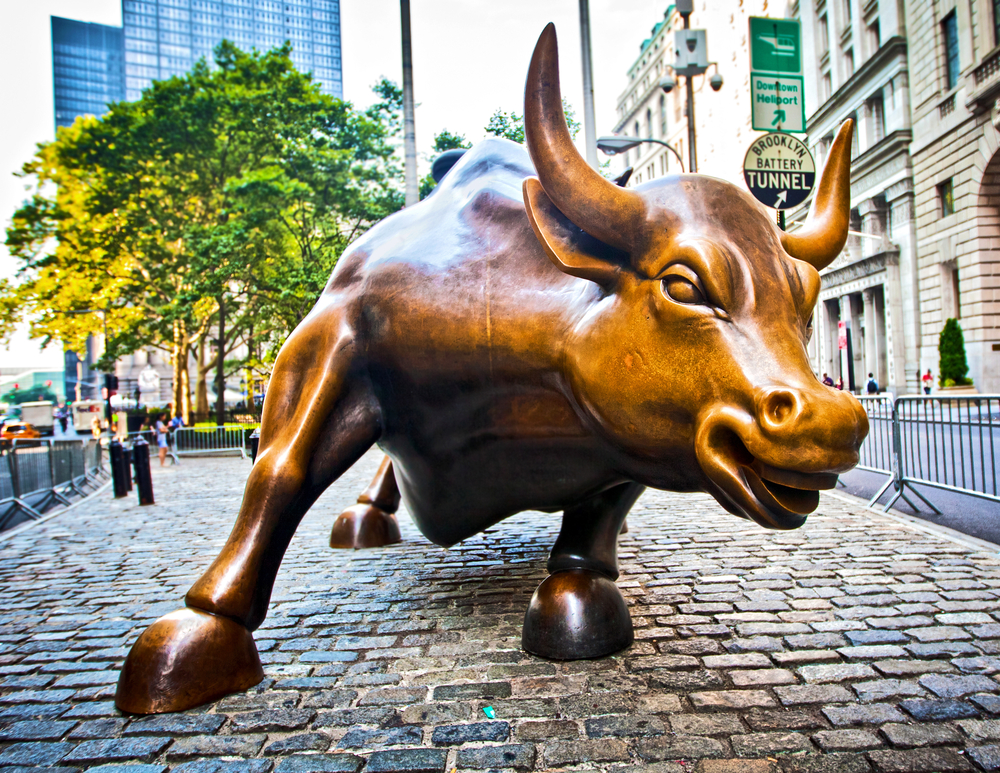Experienced Investor
FTSE at 7000: Expert reaction

The FTSE 100 breached the psychologically important 7000 barrier on Friday. Industry experts give their views.
Nick Dixon, investment director, Aegon UK
“A measured Fed announcement, rising global optimism, and a well received 2015 Budget from the Chancellor, have helped drive the FTSE-100 above 7,000 for the first time. Some may question the market’s sustainability at this level, but we see plenty of room for investors to make further gains.
“Yields on FTSE-100 stocks and UK government gilts have reversed their historic relationship since 1999-2000. Quantitative easing has been among the factors depressing gilt yields from 5.48% in Dec 1999 to around 1.52% now while the dividend yield from FTSE-100 stocks has risen from 2.35% in Dec 1999 to above 3.5% today. A gilts price / earnings ratio of 65.9 vs 15.5 for the FTSE-100 suggests the FTSE-100 offers good relative value.
“Inflation is also key. Dividend payments from equities typically rise in line with GDP growth and inflation over the long term, providing implicit inflation protection. Of course individual stocks are risky, but dividend payments from a diversified portfolio of stocks can mitigate individual stock risk.”
Jason Hollands, managing director, Tilney Bestinvest
“Although the Chancellor of the Exchequer will undoubtedly be pleased if the UK voters perceive the news that the FTSE 100 has ended the week on a new high as a resounding vote of confidence in this week’s Budget and his stewardship of the economy, the reality is that the latest spike in the market has little to do with domestic factors.
“It is more a result of the mighty US Federal Reserve’s latest guidance this week which has reduced expectations of a tightening of US monetary policy. For now, recently mounting concerns over the removal of liquidity on global markets have abated and the heat has been taken out of the Dollar rally. The good times of easy money are set to roll-on for a little longer, which has provided a relief to markets.
“It’s important to once again reiterate that the level of the FTSE 100 is not in itself a particularly useful way of measuring whether equities are cheap or expensive. The Index represents the combined market capitalisation (size) of its constituents and therefore an increase in the Index can reflect companies having genuinely grown over time, as well as new major international firms having joined the Index.
“There are numerous ways to try and assess the value of shares, but the most common one is a measure called the Price/Earnings (P/E) ratio. This measures a share’s price relative to the annual profit earned per share. In 1999 at the height of the dot com bubble, the FTSE 100 was on a P/E of 27 times earnings, in large part due to very high ratings of technology and telecom companies, whereas now it is just below 16 times earnings. Current UK valuations are a little higher than the long term average but they aren’t astronomical either and certainly below those of US equities where the S&P 500 Index is on 20 times earnings.
“When drawing comparisons between the UK stock market now and at the peak of the dot com bubble in 1999 it is also vital to factor in the impact of inflation over the last 15 years. We estimate that once adjusted for inflation, as measured by the UK Consumer Price Index, the FTSE 100 Index would currently need to be at around circa 9,500 points to be comparable with its 1999 peak of 6,930 points. That’s a long way off where we are now.
Chris Williams, CEO, Wealth Horizon
“Today the FTSE 100 finally breached 7,000 having already set numerous record highs in 2015. While this is great news for investors in UK equities, it presents a conundrum for what comes next. Certainly, no one can say equities look like a bargain at these levels, so the key for investors is to diversify their exposure and make sure they are not taking too much risk on any one market.”
Tom Stevenson, investment director, Fidelity Personal Investing
“The FTSE 100 finally cracks through the 7,000 barrier, but no-one should be celebrating. It’s been nearly 17 years since it first broke 6,000 on 1 April 1998 – a long wait for round-number watchers. The performance of the FTSE 100 is even more disappointing when you consider that the growth of the UK market has progressively slowed since its launch in 1984. While it took just three years to double the index between 1984 and 1987, it was nearly a decade for it to double again between 1987 and 1996. Even if the market races ahead from 7,000 to 8,000 it will have taken the best part of 20 years for it to double for a third time.”
Trevor Green, Head of Institutional Equities at Aviva Investors
“The FTSE 100 rises above 7,000 for the first time as investors take comfort from the fact that interest rates in the US and UK look unlikely to rise any time soon. Lower oil prices in particular are helping to improve consumer discretionary income which should feed back into higher spending. The ECB may well have been late to start Quantitative Easing, but ironically its arrival coincides with improving Eurozone economic data. As our primary trade partner, this is good news for earnings for those exposed to the region. As we come to the end of the March reporting season for UK companies, investors can take heart from broadly positive results with dividend payments surprising on the upside.”